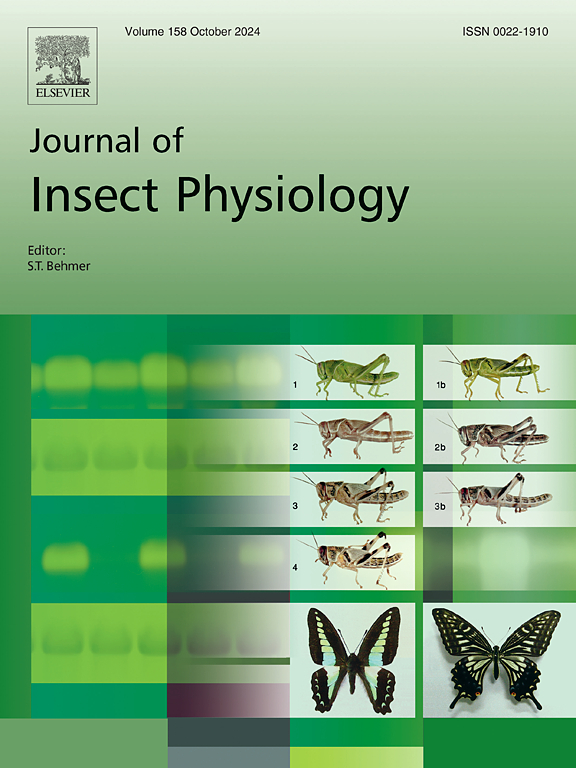Sex-dependent latent chilling injury changes estimates of thermal tolerance in a model insect
IF 2.3
2区 农林科学
Q1 ENTOMOLOGY
引用次数: 0
Abstract
Thermal injury sets limits to ectotherm mobility and survival. These limits are frequently integrated into models describing or predicting climate suitability for species of interest. Cold stress severity, sex, and prior thermal acclimation status can all influence lower thermal limits. There is a growing understanding of how chilling injuries initially manifest, but despite reports of latent injury or repair that may happen after rewarming, we poorly understand these phenomena. We exposed male and female Drosophila melanogaster to an acute or chronic cold stress before assessing their mobility over a 24 h period. Females progressively worsened under both conditions, but male mobility neither worsened nor improved. Female mobility declined slower in flies recovering at cooler temperatures, and cold acclimation significantly mitigated latent injury in females following the same degree of initial injury, regardless of recovery temperature. We conclude that latent chilling injury can be sex-specific, occurs independently from mechanisms driving tissue damage in the cold, is temperature-dependent, and is mitigated by prior thermal acclimation. We argue that latent chilling injury and the factors that influence it should be more carefully considered in estimating tolerance limits.

性别依赖的潜在冷害改变了模式昆虫的热耐受性。
热容极限与昆虫分布密切相关。热损伤设定了去除压力后的活动性或生存的限制,这些限制经常被整合到描述或预测感兴趣物种的气候适应性的模型中。冷应激的严重程度、性别和先前的热适应状态都可以影响下热极限。人们对寒伤最初是如何表现的了解越来越多,但尽管有报道称在重新升温后可能发生潜在的损伤或修复,但我们对这些现象知之甚少。我们将雄性和雌性黑腹果蝇暴露在急性或慢性冷应激下,然后在24 h的时间内评估它们的活动能力。在这两种情况下,女性的活动能力逐渐恶化,而男性的活动能力既没有恶化也没有改善。在较低温度下恢复的雌性果蝇流动性下降较慢,并且在相同程度的初始伤害后,无论恢复温度如何,冷驯化显著减轻了雌性的潜在伤害。我们得出的结论是,潜在的冷伤可能是性别特异性的,独立于寒冷中驱动组织损伤的机制,与温度有关,并且可以通过事先的热驯化来减轻。我们认为,在估计容限时应更仔细地考虑潜在冷害及其影响因素。
本文章由计算机程序翻译,如有差异,请以英文原文为准。
求助全文
约1分钟内获得全文
求助全文
来源期刊

Journal of insect physiology
生物-昆虫学
CiteScore
4.50
自引率
4.50%
发文量
77
审稿时长
57 days
期刊介绍:
All aspects of insect physiology are published in this journal which will also accept papers on the physiology of other arthropods, if the referees consider the work to be of general interest. The coverage includes endocrinology (in relation to moulting, reproduction and metabolism), pheromones, neurobiology (cellular, integrative and developmental), physiological pharmacology, nutrition (food selection, digestion and absorption), homeostasis, excretion, reproduction and behaviour. Papers covering functional genomics and molecular approaches to physiological problems will also be included. Communications on structure and applied entomology can be published if the subject matter has an explicit bearing on the physiology of arthropods. Review articles and novel method papers are also welcomed.
 求助内容:
求助内容: 应助结果提醒方式:
应助结果提醒方式:


